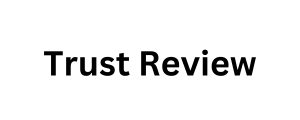In the realm of cybersecurity, the role of an insider threat analyst has become increasingly critical. With organizations facing growing risks from internal threats, these analysts play a pivotal role in safeguarding sensitive data and systems. Apart from the technical expertise required, understanding the compensation landscape for insider threat analysts is crucial for professionals and organizations alike. In this article, we delve into the factors influencing insider threat analyst salaries and explore the trends shaping this domain. Understanding Insider Threat Analyst Role: Before delving into salary trends, it’s essential to grasp the responsibilities of an insider threat analyst. These professionals are tasked with identifying, assessing, and mitigating risks posed by internal actors within an organization. Their duties typically include monitoring user activities, analyzing patterns, investigating incidents, and implementing strategies to prevent data breaches or insider attacks.
Factors Influencing Salary Several factors
Contribute to the variation in insider threat analyst salaries: Experience and Expertise: As with any profession, experience and south africa phone number expertise play a significant role in determining salary levels. Entry-level analysts may command lower salaries compared to their seasoned counterparts who possess a wealth of experience in threat analysis, incident response, and cybersecurity best practices. Industry and Organization Size: Insider threat analysts can find employment opportunities across various industries, including finance, healthcare, government, and technology. Salaries may vary depending on the sector and the size of the employing organization. For instance, analysts working in highly regulated industries such as finance or healthcare may receive higher compensation due to the heightened security requirements. Location: Geographic location is a key determinant of salary disparities. Insider threat analysts working in major metropolitan areas or tech hubs may receive higher salaries compared to those in rural or less densely populated regions.

Cost of living and demand-supply dynamics
In specific locations also influence salary levels. Certifications and Education: Professional certifications such as Certified Information Systems Security Professional (CISSP), Certified Ethical Hacker (CEH), or Certified Insider Threat Analyst (CITA) can Canada Phone Number enhance an analyst’s marketability and earning potential. Similarly, advanced degrees in cybersecurity or related fields may lead to higher-paying opportunities. Specialized Skills: Proficiency in specialized areas such as data analysis, threat intelligence, malware analysis, or behavioral analytics can significantly impact salary negotiations. Employers often seek candidates with niche skills that align with their specific cybersecurity needs. Trends in Insider Threat Analyst Salaries: While precise salary figures fluctuate based on the aforementioned factors, there are certain trends worth noting: Rising Demand: With the proliferation of insider threats and cyberattacks, the demand for skilled insider threat analysts continues to escalate.

